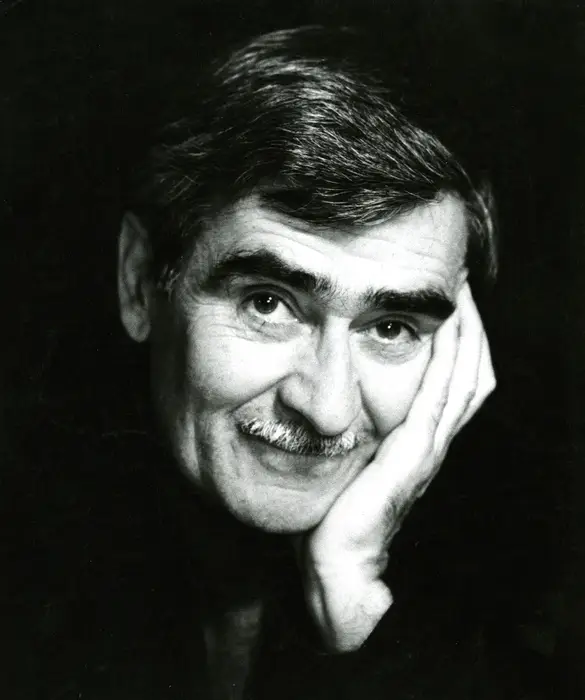Alberto Burri
biographical notes
Alberto Burri was born in Città di Castello (nr. Perugia) on March 12, 1915. He graduated in medicine in 1940. As a medical officer he was taken prisoner by the British in Tunisia in 1943 and sent to a camp in the U.S.A. at Hereford, Texas. There he abandoned his medical profession and began to paint. After the war, in 1946, he returned to Italy, settled in Rome and devoted himself entirely to painting. In 1947 and 1948 he held his first one-man shows in Rome (at the Galleria La Margherita) presented by the poets Libero De Libero and Leonardo Sinisgalli. . After a brief stay in Paris (in 1948) he became engrossed in abstract painting based around such unorthodox materials as pumice, tar and others, “presenting” the material itself as the basis of his painting.
From 1950, after his work Catrami (Tars) (1948-49), the creation of his Catrami (Sacks) grew in importance, until it predominated in his one-man shows which, after Rome, began to be held in various American and European cities: Chicago, New York, Colorado Springs, Oakland, Seattle, São Paulo, Paris, Milan, Bologna, Turin, Pittsburgh, Buffalo, and San Francisco. Of note in these years was the role played by J. J. Sweeney for the invitations sent to Burri to exhibit at the Guggenheim Museum in New York from 1953 onwards (Younger European Painters). In the fifties, Burri also elaborated his Combustioni (Combustions), Legni (Wood) and Ferri (Iron) series and in the sixties, the transparent Plastiche (Plastics), all created using fire, and organized a repertoire of his works in personal anthological exhibitions in the cities of Rome, L’Aquila, Livorno, Houston, Minneapolis, Pasadena, Darmstadt, Rotterdam, Turin and Paris.
In 1973, Burri received the Feltrinelli Prize for graphics from the Accademia Nazionale dei Lincei. In these same years Burri was working on a progressive exemplification of the formal aspects of his painting with the Cretti (Crack) (in acrylic and PVA) and the works on Cellotex (a wooden composition board), while at the end of the seventies he began some large pictorial cycles with a polychrome basis. The first, called Il Viaggio, was presented in 1979 in one of the former tobacco drying sheds (Ex Seccatoi) in Città di Castello, later destined to become one of the two Burri Museums. In 1980, he created the cycle of Orti exhibited at the Gothic Orsanmichele building in Florence, then the one called Sestante (1983) at the former Naval Yards on Giudecca, Venice, and also the cycles Annottarsi (1985-1987) which, starting from Rome, would go on to be exhibited in various European cities. Meanwhile, the reaction to his exhibitions saw significant changes: from an initial scandalized rejection, to a motivated acceptance, and finally uncritical exaltation. Meanwhile, it is important to note that the first murmurings of approval, which were to recur frequently over the years, came from the voices of poets. (L. De Libero, L. Sinisgalli, E. Villa, A. P. de Mandiargues, G. Ungaretti, C. Vivaldi and others). If in 1955 the first monograph on Burri’s work was published by J. J. Sweeney, for the Galleria L’Obelisco in Rome, it was more often international critics who charted the linguistic process of Burri’s work (J. P. Byrnes, 1955; M. Tapié, 1956; P. Wember, 1959; H. Read, 1960; etc…). Passionate pages were also lavished on him by Francesco Arcangeli (1957), Giulio Carlo Argan (1959 and 1960), Maurizio Calvesi (1959 and 1971), and Enrico Crispolti (1961 and 1962). In 1962, the contribution made by the studies of Cesare Brandi stood out, culminating in the monograph “Burri”, Editalia, Rome 1963, as well as contributions to the general catalogue by V. Rubiu. In the two decades 1970 and 1980, his exhibition and exegetical work became intense thanks to Sweeney but also to A. Passoni (1971), J. Leymarie (1972), B. Mantura and G. De Feo (1976), G. Nordland (1977), R. Causa and G. C. Argan (1978), N. Sarteanesi, E. Steingräber (1979 and 1980), V. Bramanti (1980), J. Butterfield (1982), C. Bertelli, V. Maderna, C. Pirovano (1984), and D. Abadie (1984).
In 1978, Burri founded the Palazzo Albizzini Fondazione Palazzo Albizzini Collezione Burri in Città di Castello, with the remit of promoting, managing, and disseminating his work. In 1981, the Foundation began its public activity by presenting the first nucleus of the Burri Collection personally arranged by the maestro himself in the Palazzo Albizzini museum. In 1989, the Foundation acquired the complete Ex Seccatoi complex of former tobacco drying sheds in Città di Castello which, painted completely black as requested by Burri, took on the appearance of a grand work of museum architecture, an ideal container for his large pictorial cycles. On the green in front of the sheds, Burri had three large painted metal sculptures placed: Grande Ferro Sestante, Grande Ferro K and Grande Ferro U.. In 1992 and 1993, Burri produced his last great cycles Metamorfotex and Il Nero e l’Oro, each consisting of ten large works on Cellotex.. The year 1994 celebrated Burri’s donation to the Uffizi Gallery in Florence, which included a painting, Bianco e Nero, from 1969 and three series of graphic works dated 1993-1994. Alberto Burri died in Nice on February 13, 1995.
- Fondazione Palazzo Albizzini Collezione Burri

